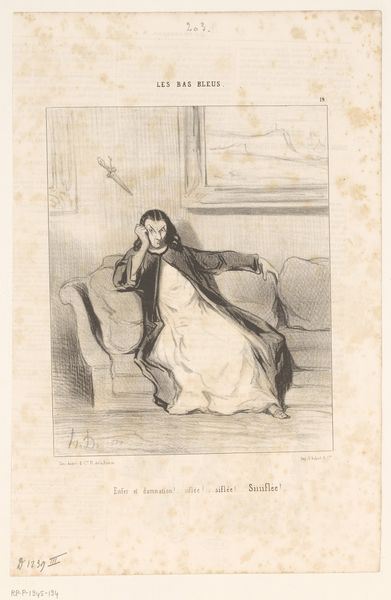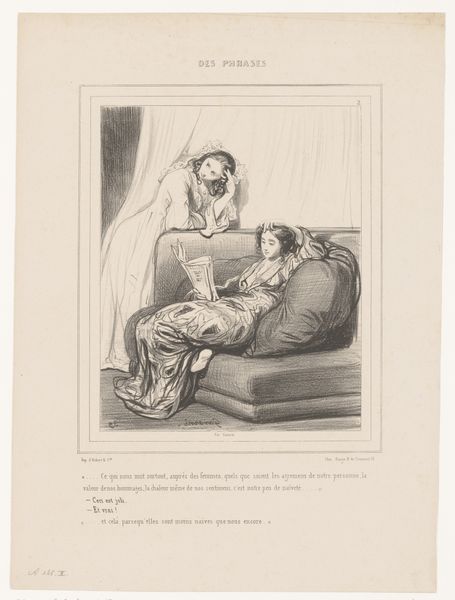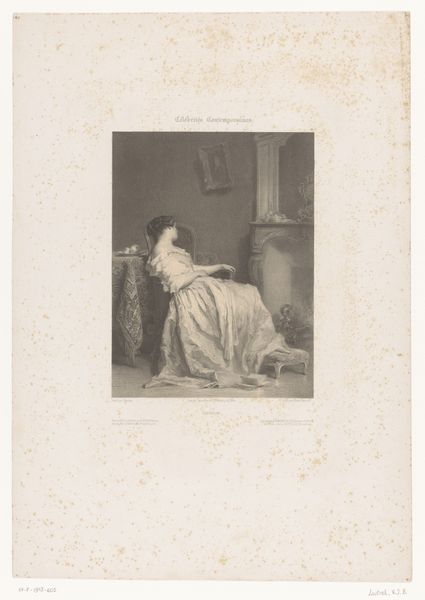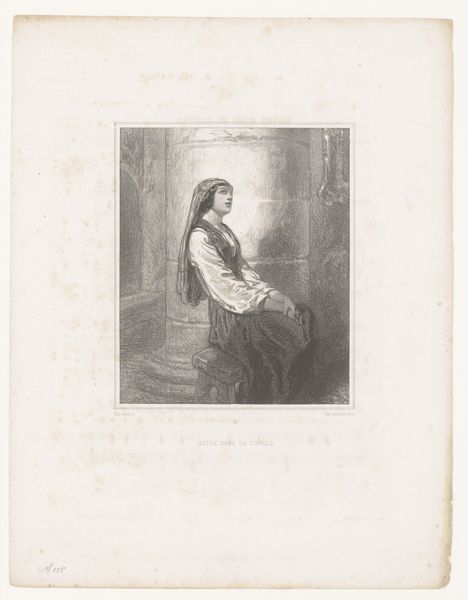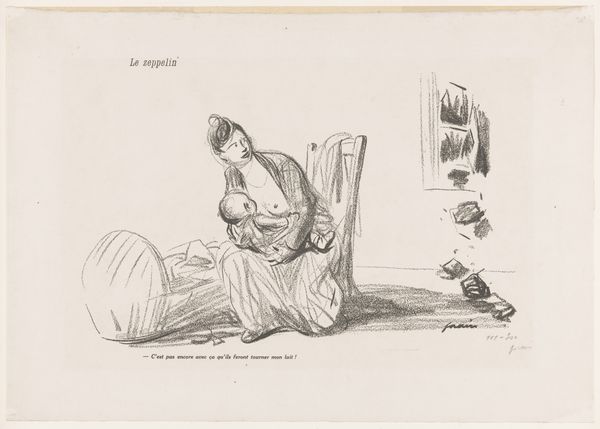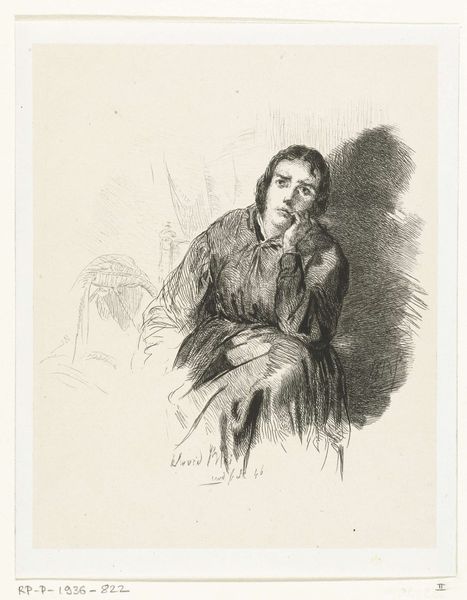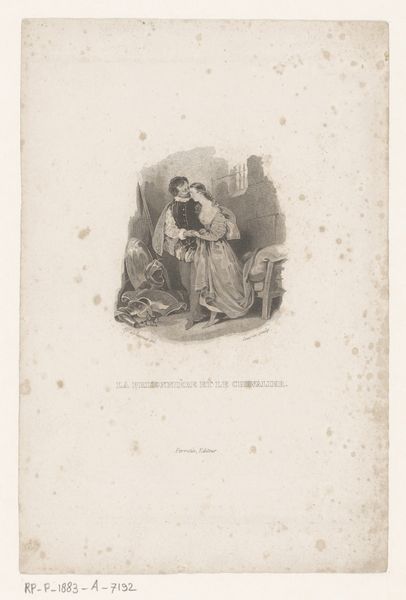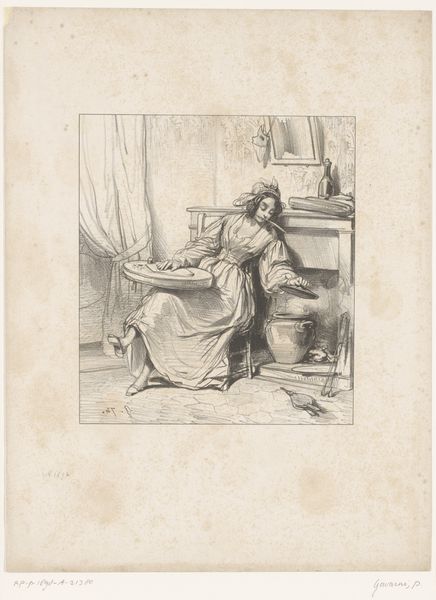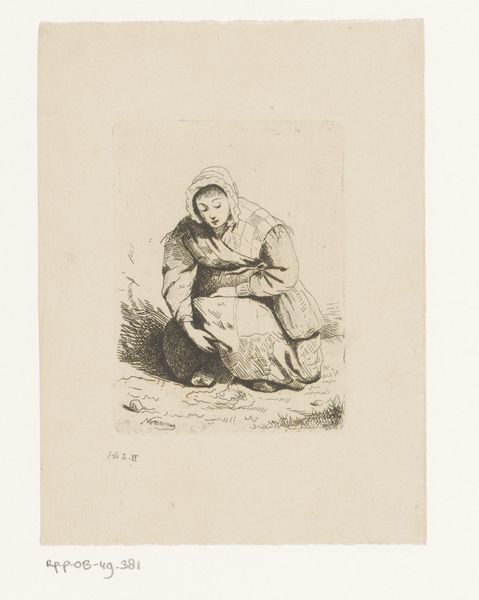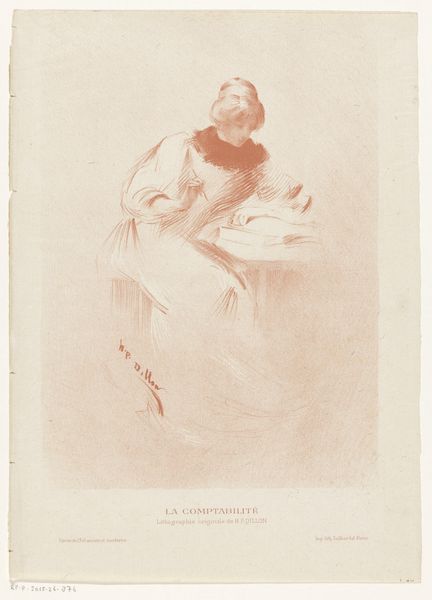
drawing, lithograph, print, pencil
#
portrait
#
pencil drawn
#
drawing
#
lithograph
# print
#
caricature
#
pencil sketch
#
figuration
#
romanticism
#
pencil
#
line
#
genre-painting
Dimensions: height 198 mm, width 135 mm
Copyright: Rijks Museum: Open Domain
Editor: We're looking at "Veertigjarige werkloze vrouw," or "Forty-year-old unemployed woman," a lithograph, drawing, and print by Paul Gavarni, from about 1840-1842, currently held in the Rijksmuseum. It's a pencil sketch of a seated woman; her face seems to express a wistful kind of pensiveness. What can you tell us about this image? Curator: Gavarni's image resonates with the social upheavals of 19th-century France, especially its implications for women. Consider the burgeoning print culture; caricatures like these reached wide audiences, shaping public opinion. Here, the title itself is blunt. "Unemployed" signifies more than just a lack of work; it questions a woman’s role and worth within a rapidly changing society. Editor: So, it's less about her personal unemployment, and more a comment on women’s societal position? Curator: Precisely. How does Gavarni's artistic approach amplify this reading? Notice the romantic style, yet the clear lines provide a certain clarity that contrasts her apparent dreamy expression. It’s both romanticized, yet it carries realism, creating a complex depiction of working-class women. How does this complicate a simple viewing of the woman's likeness? Editor: It seems to elevate the subject while also drawing attention to her plight as a socio-economic commentary on romanticized work and its actualities for everyday people. Curator: Exactly. Furthermore, the artwork challenges prevailing notions of beauty and worth, placing a "forty-year-old" woman—presumably past her prime in societal views—at the center of artistic contemplation, urging the public to re-evaluate its judgment and societal standards of beauty during this period. Editor: That's so fascinating; I didn't consider the significance of her age in the title. I thought I was just looking at an emotional drawing, but it is saying so much more about its socio-political setting and circumstances. Curator: Yes, through social history, a pencil sketch becomes a poignant statement on 19th-century femininity and labor expectations.
Comments
No comments
Be the first to comment and join the conversation on the ultimate creative platform.
